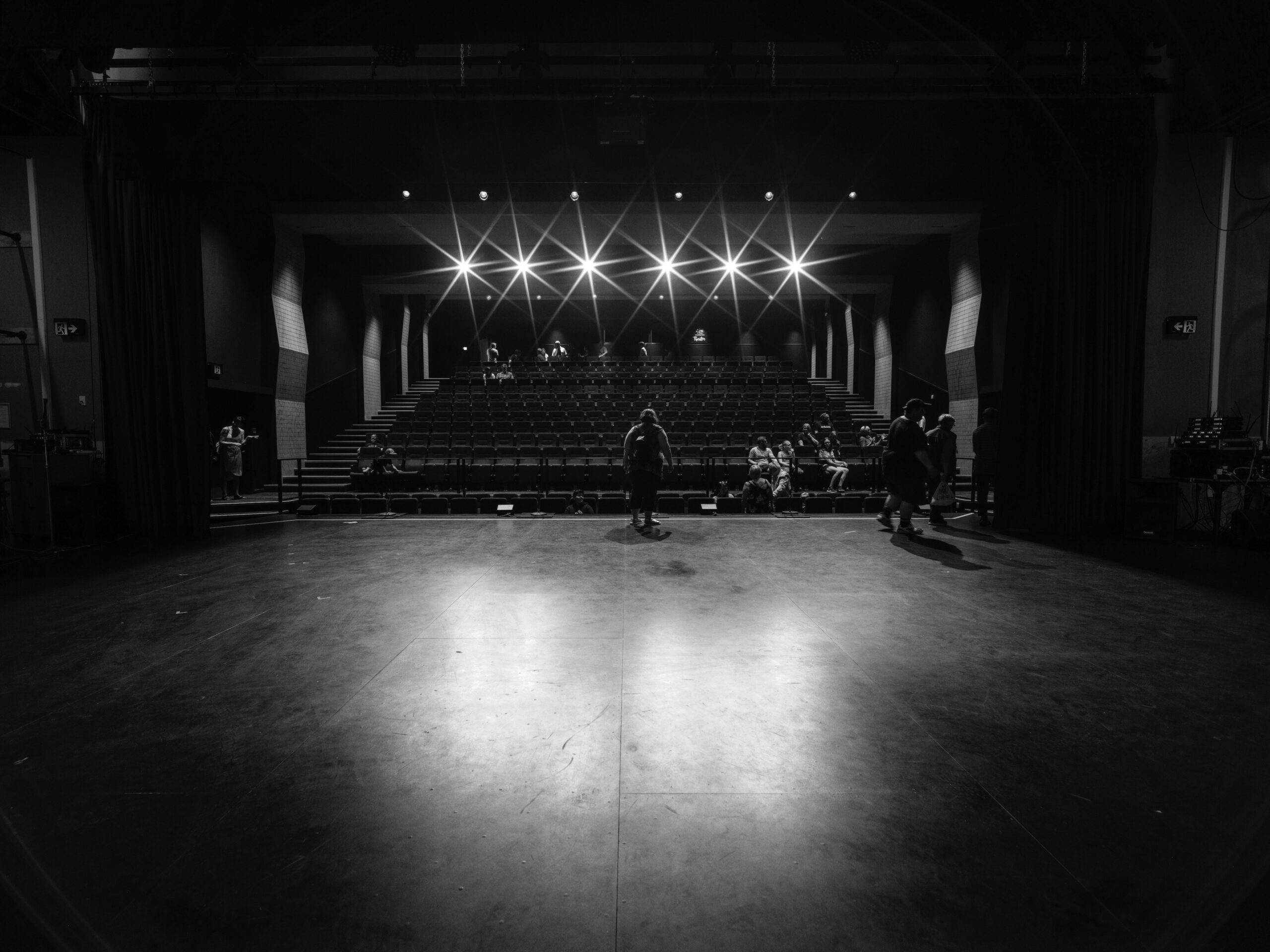The Impact of the “Misclassification” of Employees as Independent Contractors on New York City’s Performing Arts Institutions and Gig-Based Performers
- Guide to Independent Contractors' CARES Act Relief, U.S. Chamber of Commerce, (Oct. 12, 2020) https://www.uschamber.com/security/pandemic/guide-to-independent-contractors-cares-act-relief [https://perma.cc/95S9-ADEQ]; Coronavirus Aid, Relief, and Economic Security Act, PL 116-136, March 27, 2020, 134 Stat 281; Jim Garner, New COVID-19 Unemployment Benefits: Answering Common Questions, U.S. Department of Labor Blog, (Jan. 11, 2021), https://blog.dol.gov/2021/01/11/unemployment-benefits-answering-common-questions [https://perma.cc/9UM9-V8C2].
- The New York State Department of Labor Stops Fraudsters from Stealing More Than $5.5 Billion in Unemployment Benefits During Covid-19 Pandemic, New York State Department of Labor, (Feb. 2, 2021), https://dol.ny.gov/news/new-york-state-department-labor-stops-fraudsters-stealing-more-55-billion-unemployment [https://perma.cc/U87D-2XZA].
- Id.
- About NYSIF, NYSIF, https://ww3.nysif.com/Home/FooterPages/Column1/AboutNYSIF [https://perma.cc/EG4K-BV4N] (New York State Insurance Fund was created by the Workers' Compensation Act of 1914 to provide workers' compensation and disability insurance with the lowest possible cost to New York employers while maintaining a solvent fund. Workers Compensation is required to be obtained by the employer for every “employee.” While they provide lower premiums, NYSIF is known to audit more than private insurers); About Us, New York State Department of Labor, https://dol.ny.gov/about-us [https://perma.cc/5NNA-FLAR] (The New York State Department of Labor serves as the state government agency responsible for enforcing labor laws and administering unemployment benefits in New York. They administered the CARES unemployment provisions and are responsible for auditing organizations to assess compliance with various labor-related matters, such as unemployment insurance, wage and hour laws, and worker classification).
- Zoom interview with anonymous performing arts organizations (March 2024) (Information included about specific performing arts organizations are based on direct testimony from four different organizations who will remain anonymous as they are still in legal proceedings).
- Tom McKinney, New York Department of Labor Audits – Why They are Happening and What You Can Do, Castronovo & McKinney Employment Attorneys, (Oct. 9, 2013) https://nyplaintiff.com/new-york-department-labor-audits/ [https://perma.cc/H7FF-A9RF].
- Id.
- McKinney, supra note 6; CARES ACT: List of Required Documents, Mass.gov, https://www.mass.gov/doc/pandemic-unemployment-assistance-list-of-required-documents/download [https://perma.cc/MU39-JC59] (workers when filing for unemployment under the CARES Act were required to submit all earning records for the year prior – such as their 1099, bank statements, and pay stubs).
- McKinney, supra note 6.
- Employee Misclassification, Woods | Lonergan, https://www.woodslaw.com/practice-areas/employment-law/wage-and-hour-claims/employee-misclassification/#:~:text=When%20an%20employee%20can%20show%20that%20the%20misclassification,100%20percent%20of%20Social%20Security%20and%20Medicare%20contributions [https://perma.cc/AL4S-8XVF].
- Estimated Payroll Verifications, NYSIF, https://ww3.nysif.com/en/Employer/WCpolicyholder/AboutAuditing/EstimatedAudits [https://perma.cc/7BQ5-CDXK]; NY Work Comp L § 10 (2022) (“Every employer subject to this chapter shall in accordance with this chapter, except as otherwise provided in section twenty-five-a hereof, secure compensation to his employees and pay or provide compensation for their disability or death from injury arising out of and in the course of the employment without regard to fault as a cause of the injury”); NY Work Comp L § 95 (2022) (“Every employer who is insured in the state insurance fund shall keep a true and accurate record of the number of his employees and the wages paid by him, and shall furnish, upon demand, a sworn statement of the same. Such record shall be open to inspection at any time and as often as may be necessary. . .”).
- NY Work Comp L § 2.
- What business owners must know about workers’ compensation, New York State Workers Compensation Board, https://www.wcb.ny.gov/content/main/TheBoard/BusinessOwners.pdf#:~:text=Businesses%20pay%20a%20penalty%20of%20up%20to%20%242%2C000,for%20five%20or%20fewer%20employees%20is%20a%20misdemeanor [https://perma.cc/5PNC-5PZN].
- Id.
- Zoom interview with anonymous performing arts organization, supra note 5.
- N.Y. Lab. Law § 511 (McKinney).
- Id.
- Bynog v. Cipriani Grp., Inc., 1 N.Y.3d 193, 802 N.E.2d 1090 (2003) (TEST: “(1) whether the worker worked at his/her own convenience (2) whether the worker was free to engage in other employment (3) whether the worker received fringe benefits (4) whether the worker was on the employer’s payroll and (5) whether the worker was on a fixed schedule.”).
- Bynog, supra note 18; see e.g. Columbia Artists Management v. Commissioner of Labor (Supreme Court, Appellate Division, Third Department, New York) (2013) (Since defendant retained the right to insist that a performance be changed if it found it to be inappropriate and that they could dismiss any musician for drug or alcohol abuse that they had “broad overall control” and the court found the musicians to be employees).
- Anne A. Idalski, Defending Your Independent Contractor Classifications, SHRM, (April 1, 2015) https://www.shrm.org/topics-tools/news/hr-magazine/defending-independent-contractor-classifications [https://perma.cc/A6WP-7LY5]; see e.g. Womens Project and Productions INC v. Commissioner of Labor (Supreme Court, Appellate Division, Third Department, New York) (2020) (Written agreements between theater company and workers it hired did not rebut presumption that the workers were employees).
- Interview with Lawyer of one of the impacted performing arts organizations (March 2024).
- INDEPENDENT CONTRACTOR MISCLASSIFICATION IMPOSES HUGE COSTS ON WORKERS AND FEDERAL AND STATE TREASURIES, National Employment Law Project, (Oct. 26, 2020),https://www.nelp.org/publication/independent-contractor-misclassification-imposes-huge-costs-workers-federal-state-treasuries-update-october-2020/ [https://perma.cc/9WDB-E7ZZ]; Gig Economy: Definition, Factors Behind It, Critique & Gig Work, Investopedia (Updated March 27, 2024) https://www.investopedia.com/terms/g/gig-economy.asp [https://perma.cc/22PL-EM8N] (“A gig economy is a labor market that relies heavily on temporary and part-time positions filled by independent contractors and freelancers rather than full-time permanent employees. Gig workers gain flexibility and independence but little or no job security.”).
- Id.
- Comptroller Stringer Spotlights Creative Sector’s Critical Contributions to NYC Economy in Expansive New Report, New York City Comptroller Brad Lander, (Oct. 25, 2019)
https://comptroller.nyc.gov/newsroom/comptroller-stringer-spotlights-creative-sectors-critical-contributions-to-nyc-economy-in-expansive-new-report/ [https://perma.cc/69BW-TQKN] (Prior to the pandemic, NYC’s creative sectors employed nearly 300,000 New Yorkers and spurred $110 billion in economic activity, accounting for nearly 10% of NYC’s gross domestic product. As of June 2023, employment in the arts and entertainment industry remained 10% below 2019 levels).
- Eli Dvorkin, Charles Shaviro, and Sarah Amandolare with Sara Bellan, CREATIVE COMEBACK: SURVEYING NYC’S CULTURAL ECOSYSTEM IN THE WAKE OF COVID-19, Center for an Urban Future, (July 2021) https://nycfuture.org/research/surveying-nycs-arts-after-covid [https://perma.cc/S3FB-VW6E].
- Id.




